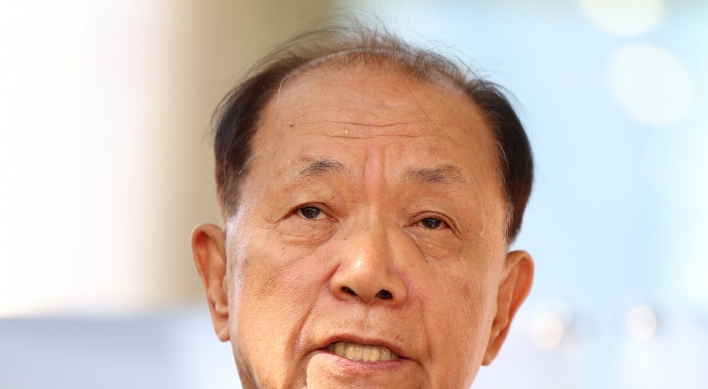[Editorial] Will they last?
Sustainability key for creative economy centers
By 이윤주Published : July 24, 2015 - 17:37
President Park Geun-hye hosted a luncheon Friday for the heads of the 17 major conglomerates which are each supporting her signature project for promoting start-ups and venture firms in an equal number of major provinces and metropolises.
The Blue House luncheon came two days after Park visited Incheon to open the 17th and last center there. Like in other centers, Hanjin Group, in tandem with the Incheon Metropolitan Government, will spend 159 billion won ($138 million) to foster local start-ups and venture firms in the area.
The project, which began with Samsung in Daegu last September, is part of Park’s flagship policy of developing a “creative economy.” The fact that Park invited the 17 tycoons to lunch and she missed only two of the 17 opening ceremonies shows how much she cares about the project.
The basic concept of the project is that one conglomerate is “assigned” to each of the 17 provinces or metropolises, where it will team up with the local government to support “innovators” who have ideas and technologies but not enough resources to get them into markets.
If things go well, this could be a good initiative for nurturing small, innovative firms, which are essential for driving the economy stuck in a low-growth trap, creating jobs and reducing its reliance on big businesses.
Government officials are already bragging about what the centers have been doing. They said the centers have assisted about 250 firms in their efforts to develop products and services and sell them in markets at home and abroad. The centers also helped draw about 29.9 billion won in investment money.
But officials tend to paint a rosy picture -- more so when they deal with a pet project of the president. What we hear from those outside government is different.
The biggest problem is that much of the centers’ works overlaps with those of similar institutions. This is not surprising since there are a plethora of similar establishments -- incubation centers, techno parks, innovation centers, innovation clusters and research and development special zones.
In addition, universities and state-funded research institutes also undertake programs to support start-ups and venture firms. One report estimated that altogether, the number of institutions related to start-ups, venture firms and research and development will exceed 3,000.
The most fundamental question is whether the project will be able to survive the Park administration, which ends in about two and a half years. We ask this because the centers, especially the pairing of conglomerates with local governments, are products of a top-down government initiative, not based on needs of businesses.
Many such projects cherished by past presidents did not outlast their term of office. One needs to look no further than the four river development project of the Lee Myung-bak administration.
The Blue House luncheon came two days after Park visited Incheon to open the 17th and last center there. Like in other centers, Hanjin Group, in tandem with the Incheon Metropolitan Government, will spend 159 billion won ($138 million) to foster local start-ups and venture firms in the area.
The project, which began with Samsung in Daegu last September, is part of Park’s flagship policy of developing a “creative economy.” The fact that Park invited the 17 tycoons to lunch and she missed only two of the 17 opening ceremonies shows how much she cares about the project.
The basic concept of the project is that one conglomerate is “assigned” to each of the 17 provinces or metropolises, where it will team up with the local government to support “innovators” who have ideas and technologies but not enough resources to get them into markets.
If things go well, this could be a good initiative for nurturing small, innovative firms, which are essential for driving the economy stuck in a low-growth trap, creating jobs and reducing its reliance on big businesses.
Government officials are already bragging about what the centers have been doing. They said the centers have assisted about 250 firms in their efforts to develop products and services and sell them in markets at home and abroad. The centers also helped draw about 29.9 billion won in investment money.
But officials tend to paint a rosy picture -- more so when they deal with a pet project of the president. What we hear from those outside government is different.
The biggest problem is that much of the centers’ works overlaps with those of similar institutions. This is not surprising since there are a plethora of similar establishments -- incubation centers, techno parks, innovation centers, innovation clusters and research and development special zones.
In addition, universities and state-funded research institutes also undertake programs to support start-ups and venture firms. One report estimated that altogether, the number of institutions related to start-ups, venture firms and research and development will exceed 3,000.
The most fundamental question is whether the project will be able to survive the Park administration, which ends in about two and a half years. We ask this because the centers, especially the pairing of conglomerates with local governments, are products of a top-down government initiative, not based on needs of businesses.
Many such projects cherished by past presidents did not outlast their term of office. One needs to look no further than the four river development project of the Lee Myung-bak administration.







![[KH Explains] No more 'Michael' at Kakao Games](http://res.heraldm.com/phpwas/restmb_idxmake.php?idx=644&simg=/content/image/2024/04/28/20240428050183_0.jpg&u=20240428180321)










![[Herald Interview] Mistakes turn into blessings in street performance, director says](http://res.heraldm.com/phpwas/restmb_idxmake.php?idx=652&simg=/content/image/2024/04/28/20240428050150_0.jpg&u=20240428174656)
